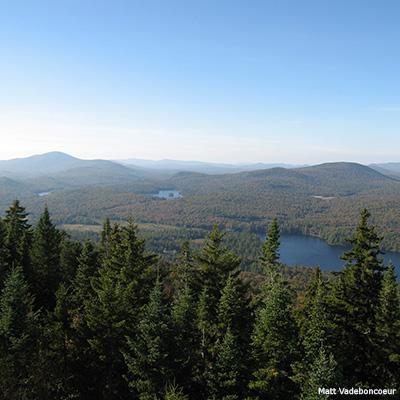Understanding the Physical and Biological Drivers of Observed Evapotranspiration Declines in the Northern Forest Region

During evapotranspiration (ET), water moves from soil to atmosphere through plants. In the Northeast, forests use about half the precipitation received annually, and the rate of ET is controlled by temperature, humidity, sunlight, wind, and stomata (gas-exchange pores on leaves). Changes in ET can have important consequences for freshwater resources, ecosystem productivity, soil biogeochemical processes, global climate, and the global water cycle.
To better understand ET in the Northeast, NSRC researchers examined long-term trends and annual variation in ET in 7 unmanaged forested watersheds from Maine to West Virginia. Researchers looked at the relationship between watershed-scale water balance and annual climate statistics. They also sampled tree rings and examined correlations of ET and climate with tree growth and water use. Study sites in New Hampshire and West Virginia have records longer than 50 years and show significant ET declines of ~2% per decade. Researchers did not detect significant trends in the shorter records at other watersheds. Findings demonstrate much greater sensitivity of tree growth and physiology to drought in the southern part of the study region than in the northern part where ecosystems may respond more subtly to a wider array of variables, including timing of seasonal transitions, growing season temperature, humidity, and cloudiness.
Researchers see little evidence for increases in ET in the humid Northeast; instead modest declines can be detected. This likely relates to increases in water use efficiency due to atmospheric carbon enrichment, which may offset the effect of warming on ET. Tree ring analyses indicate large increases in water-use efficiency at all sites since 1950.
